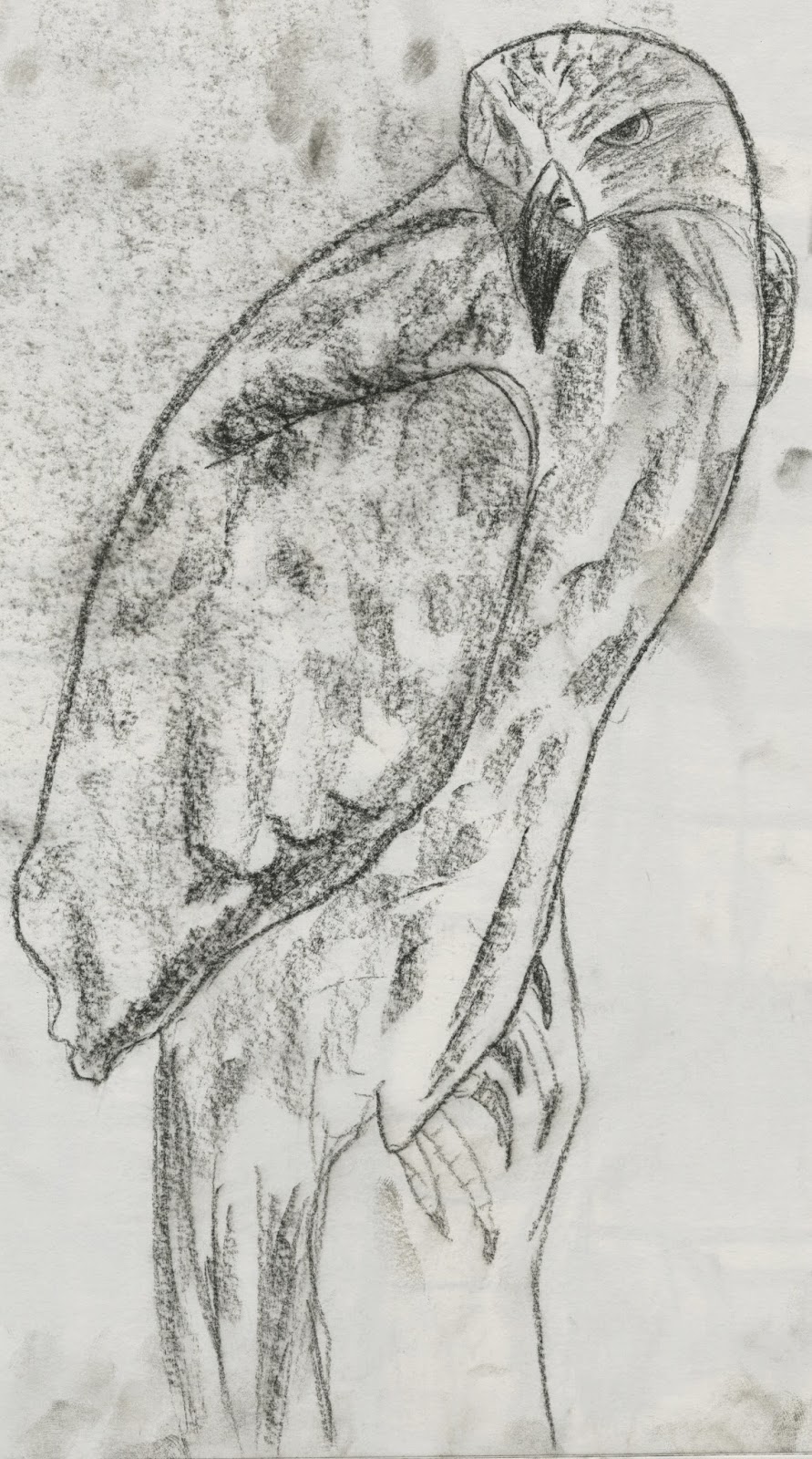The artist has drawn some non-human anatomy in this post and has attempted to use the same techniques used in figure drawing, on non-human figures. The picture on the left is of an eagle that is perched on a branch. The artist has got good form and proportion of the eagle, nothing looks oversized or too small. You can see the folds of the eagles feathers as it twists its head to look to the side, this is a good representation of non-human anatomy because it shows how the eagles neck works as it turns. The artist has tried to give the impression of feathers by using the long edge of a graphite stick, this worked to some degree but could have been used with a bit more precision to imitate an eagles feathers, the strokes look scattered around the eagle and not in order.
Here is a picture that the artist has drawn of a panda. He has used the long edge of a conté crayon to add depth and shadows to the panda to make it seem 3 dimensional. The anatomy of the panda is quite accurate, the artist has managed to capture the proportions of the head in comparison to the body quite well. With the use of foreshortening the artist has managed to make the pandas back legs look further away than the front, he has achieved that well. With the use of the conté crayon he has managed to conceal a mistake too. There is no gap in between the pandas left legs, so he shaded it in to give the appearance of shadow and to conceal the mistake that was made, and it works okay.
There are two drawings on this page, one of a bat and one of a tree climbing porcupine. The anatomy of the bad has been drawn okay. The wings have been drawn nicely and have good proportions to the body. The shading that the artist has done on the far wing, the bats left, adds a lot of tonal value. It darkens the closer it is to the bone and shows that it is like a kite, and it is flown on. The body however lacks a lot of detail.
The second drawing is of a tree climbing porcupine. The anatomy of it has been accurately drawn and clearly shows the arch of the back and the proportions of the body and head look accurate. The spines on its body has been done well because the strokes of the graphite stick have directional values that shows how the spines on the porcupine grows and what it looks like in real life. if the graphite strokes weren't directional along the body it would have a much more bizarre appearance.



No comments:
Post a Comment